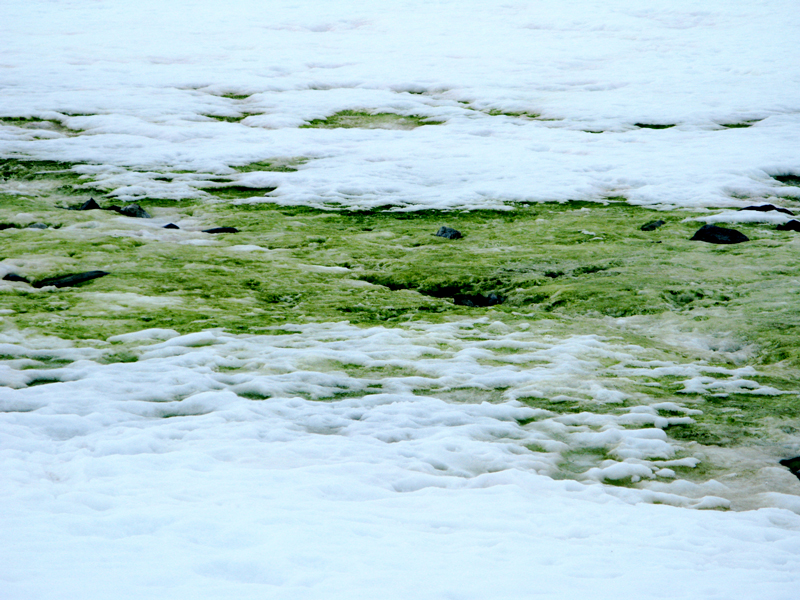Interview with Graham Bell
«If you have a sound biological education, then you cannot become a creationist»
Professor of Evolution at McGill and Fellow of the Royal Society

Dr. Graham Bell, Professor of Evolution at McGill University (Montréal) has been recently elected Fellow of the Royal Society (2016), one of the most prestigious scientific awards. His most renowned recent contributions come from the field of experimental evolution, but he is as equally well recognized for major influences on the development of other exciting research programs in ecology and evolution, including the neutral biodiversity theory, and the evolution of sex, “the Queen of problems in Evolutionary Biology”, as he put it in his excellent book The masterpiece of nature (University of California Press, 1982).
In your recent textbook, The evolution of life (Oxford University Press, 2015), you introduce the first chapter stating that “Almost everything is a pebble, a watch or a beetle”. Did you choose the particular term “watch” on purpose to remark the difference between objects designed by humans and living organisms?
Yes, this example goes all the way back to Paley.
How can scientists make the society understand that the the reasoning behind “intelligent design” and “creationist” views is not based on scientific discovery but rather, one related to beliefs?
I do not think it is a problem in Europe at all, as far as I know. In Canada, not really. It is in part a problem in the United States and in other parts of the world. The solution is just education. If you have a sound biological education, then you cannot become a creationist.
Fifteen years ago, in an interview with Lynn Margulis for Mètode, she considered that the most important steps in evolution came from symbiotic associations of different organisms. Do you share this view, that big steps in evolution come from large genome fusions or symbiosis, or do you instead think that a path of microevolutionary steps runs evolution?
This is an argument that has been going on for a long time. This is, is evolution the accumulation of many very small changes across an immense period of time or can evolution happen very rapidly and give rise to new kinds of creatures in a very short period of time? The answer is yes, both of these are true. In experimental evolution, it has been argued that you get changes very rapidly because of a few genes with mutations that have a very large effect. Or that adaptation consists of the accumulation of many mutations of small individual effect. It seems both of these are true but in different circumstances. So, if you have a large population of microbes, and you suddenly expose them to severe stress, the first change you will see will be due to a mutation of large effect – very often a loss of function through a mutation in a regulatory gene, that sort of thing happened. If, on the other hand, you are dealing with stress that is light for a long period of time, then you may rather accumulate mutations of small effect. So, in other words, I have a point of view that it may be true depending on the circumstances in which the population is evolving. I think Lynn Margulis’ point is that some of the most fundamental features of eukaryotic life at least must have arisen quite abruptly because of the domestication of prokaryotes that have been engulfed as such with transformed chloroplasts and mitochondria. And in that sense, it is perfectly correct. So you have both, large-scale broad changes and the subsequent modification by a long series of smaller changes.
«There is a long tradition dating back to Darwin to emphasize the extreme slowness of the evolutionary change»
If these two evolutionary progression paths are important, why do we almost always focus on small gradual evolutionary changes, rather than looking for how major changes are produced and evolve?
This is a long tradition dating back to Darwin to emphasize the extreme slowness of the evolutionary change. In that, he was supported by most of his contemporaries. And it was not until the 1950s that we realized that adaptation could occur very swiftly, either in the laboratory or in the field, with the first studies which showed that it was possible to study the action of natural selection in the field in a reasonable period of time (with studies on snails and flies and so forth). So, it was that gradualist tradition that has been extremely strong and lasted for almost a century. And only came to be broken down fifty years ago. Now there is a whole new school of thought in evolutionary biology called eco-evolutionary dynamics (sometimes having other names), which emphasizes that evolutionary change can affect the ecological properties of species within a short period of time. Therefore, you cannot ignore evolutionary change when you are thinking about the population dynamics of species or communities. This is a change in emphasis that has occurred relatively recently.
I wonder if such focus on nucleotide sequence changes stems also from the development of molecular techniques (PCR, sequencing…) developed in the last decades.
The ability to sequence certainly changes our ability to see what is the underlying genetic basis of adaptation. But things have not turned out to be exactly as had been anticipated. We had thought that you have the classical picture of a population that experiences stress and then, when a beneficial mutation arises, passes through the population and becomes fixed. At a certain waiting time the next mutation comes along, it becomes fixed and so forth, in an asexual population. It turns up that this is not true, at least in the cases in which it is been studied. Instead, you have all cohorts or combinations of genes, going to fix selection or being depressed. This is much more complex than we thought it was going to be. Moreover, many, if not most of the changes that are observed during adaptation in the laboratory are small deletions, small insertions, and rearrangements. In each population, you can get quite major karyotypic changes occurring during the evolution of a population within a period of a few months. So, the evolving population is a more complex genetic entity than we thought it was before. Unfortunately, it is often very difficult to relate the changes that are occurring to the agents of those changes. Very often it is possible to predict exactly what you are going to modify, and more or less what mutations are being successful, but if you have more complex changes, like simply domesticating an organism in the laboratory and accustoming it to growth in an artificial medium or exposing it to more natural conditions, then you can get much more complex changes, in which it is very difficult to predict exactly what is going to occur. You can predict the phenotypes, but not the genetic changes behind.
«The ability to sequence certainly changes our ability to see what is the underlying genetic basis of adaptation»
Sex and death are an obsession for many people, not only for you as we can see in your book Sex and death in protozoa. The history of an obsession (Cambridge University Press, 1998). But how are they linked?
This was because by accident I came across experiments that had been done in the latter half of the nineteenth century, when there was an idea that if a lineage was perpetually asexual it would gradually lose vitality, it would decay and eventually become extinct. So, sex is necessary to rejuvenate the lineage. Some researchers did very long, laborious, and ingenious experiments, isolating propagules. You take a ciliate or some other protozoan, put in on a watch glass, look it under the microscope, you culture it for 24 hours, and at the end of that period of time you will produce progeny. You chose one of them, isolate that, leave it for 24 hours again, it will reproduce, then isolate one of those, and so forth. The prediction was that as long as the reproduction period goes, eventually all those lines will decay and will go extinct. At that point, before they go extinct, you need a sexual cycle to rejuvenate the lineage, which in some way was not very clearly specified how it was done. So, these experiments were done, and amazingly they were successful, and the connection between sex and death is that if you do propagate an asexual lineage continually isolating single individuals, then the lineage does indeed decay. And those experiments have been repeated in modern times, with microbes and other sorts of organisms, and same results appear all time: the lineage decays.
And this decay is not because of the environment…
No, it is not. In experiments like that, what you are doing is gradually irreversibly increasing the frequency of deleterious mutations. Which in a large sexual population are kept at low frequency by natural selection. So, you can actually use experiments of that sort to measure or estimate the mutation rate (mutation accumulation experiments). They were doing it and got the right results, but were unable at that time to interpret the results, because a lot of these experiments were pre-Mendel. A fascinating history that led of course to modern thought about the way sex is maintained in natural populations. So that is the link between sex and death. Isolated experimental cultures lead to the decay of populations without sex.
You have been one of the founders of the neutral view of metacommunity organization, where macroecological patterns arise in the absence of differences between species. However you also consider ecological selection essential in adaptation and speciation. Are these views not contradictory?
I distinguish between what I call the strong and weak versions of the neutral theory. So, the stronger is that species really are exactly equivalent. And that gives rise to macroecological patterns like the species-area relationships and so forth. The weak version is that species may in fact be distinguished, they are ecologically different with respect to some attribute. But that is quite difficult to detect. And the stochastic processes overwhelm those systematic differences when we are dealing with the sort of macroecological patterns such as the species-area relationship. In other words, assemblages of species behave as if they were neutral strictly speaking. I think the weak version of the neutral theory is extremely persuasive. Pretty well, all macroecology can be explained in terms of patterns that would be exhibited by neutral communities. The classic example is co-distribution. There, you have a different number of sites within a given area. You record the species that are present in each of the sites, and what you expect to observe, if niche theory is correct, is that there should be consistent correlations between species. So, you would find the same sort of species in the same sort of sites. If neutral theory is correct, what you expect is distinguishing the patterns of co-distribution that are predicted by the niche theory from those predicted by the neutral theory would be surprisingly difficult. You have to make quite specific assumptions about the structure of the environment and the way in which organisms relate to it. And you have to have quite strong selection acting within sites in order for a signal to come through what is definitely not neutral. So, in other words, it is very difficult to infer process from pattern. And I think that is where a lot of macroecologists have gone wrong. They think that they can observe patterns in nature, and from those they can make strong inferences about natural processes. The lesson of the neutral theory is that that is not true. We can explain pretty well all of these patterns by neutral theory, whether or not neutral theory strictly applies in the sense that all species really do have equivalent ecological attributes.

In a recent review on adaptation to global change and CO2 increase, based on experimental evolution, you concluded that natural populations often fail to adapt to human impacts, and furthermore, that algae might not only not be helpful in increasing CO2 pumping efficiency, but rather losing it, so we cannot rely on their response. A “sombre view”, as you put it, is it not?
The experiments that we have done, which are pretty extensive experiments, done by Sinéad Collins and Dieter Sültemeyer, showed that phytoplankton do not specifically adapt to elevated CO2, which was a big surprise. This has been done in the laboratory with Chlamydomonas, which is a model algae, and it has also been done in half a dozen other species. We always got the same results. When you maintain populations for a thousand generations under elevated CO2, at the end of that their properties had not changed. You do not observe that a population that is cultured for 1,000 generations at elevated CO2 are better at elevated CO2 than comparable populations which have been cultured in ambient CO2. So, no specific response. It seems that they get worse at lower CO2. That is the usual loss of function. If you are not using systems, then they tend to decay because of accumulation of deleterious mutations. But, surprisingly, there is no adaptation here. There are ecological consequences, however; that is, within a population. But if you compare different sorts of algae, diatoms, chlorophytes and cyanobacteria at elevated CO2 it does alter their competitive relationship. Specifically, those that are most efficient at fixing CO2 tend to be at a competitive disadvantage when CO2 concentrations in the atmosphere increase. So, the relatively inefficient types like chlorophytes, actually increase in frequency in experimental communities, relative to more efficient phytoplankton like cyanobacteria. So, although I think that our experiment showed that you cannot expect individual species to become adapted to elevated CO2, nevertheless, at a community level the balance between community species will change. That is a non-neutral change.
«You have to interest people who in their early lives have no contact with that particular field»
Scientific writing is usually cold, even boring. However, you have been recognised as keeping a rich language when writing academic essays. For instance, The masterpiece of nature is the engaging title of one of your books. Do you not think that scientific writing needs some more attractive style?
Well, it depends on the audience you are writing for. So, if you are making a particular technical point, that will really only influence a hundred people, the ones there are in the field; then you sacrifice everything for precision, to say what exactly you have done, exactly what you have seen and what that means. That is true in journals when you are synthetizing a new chemical or describing a new mutation… Some simple technical matter of that sort. It will be a very dry standard style of writing. Not for general audiences. On the other hand, if you are publishing in a journal which will be read by people with widely different backgrounds like Nature or Science, Proceedings of the National Academy of Sciences, this sort of general purpose journals, then I think it is a virtue to write in a more engaging style. You want – to some extent – to simplify things and make the fact that they are interesting more easily apparent to people not working exactly in that field. In that case, you are sacrificing yourself in the matter of precision, for directness of communication. And, of course, if you are writing – as you are – for the general public, then you have to interest people who in their early lives have no contact with that particular field. So, it all depends on the readers.





